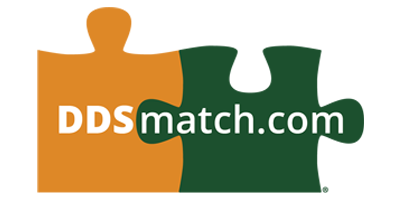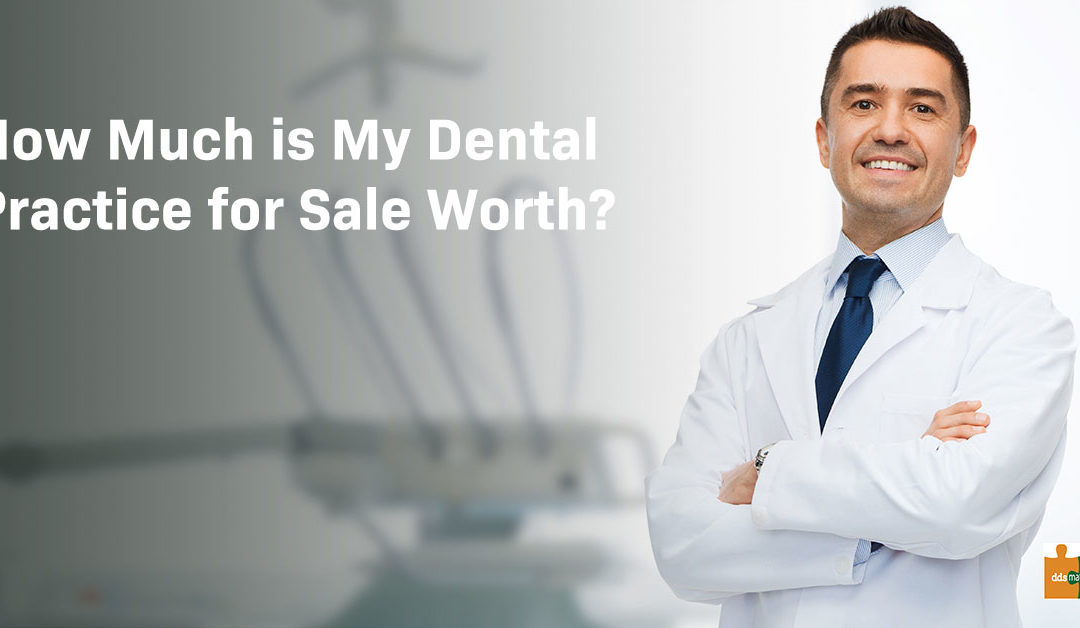When it comes to valuing a dental practice for sale, there are a lot of different methods and theories. In all honesty, there are so many variable factors that there is no one formula where you plug in numbers on one end and get an objectively correct answer out the other. But there are a couple of rules of thumb that can give you a good idea of a ballpark range. Realistically, you’ll need to work closely with your accountant, your dental practice broker, and, ideally, a certified valuation analyst (here at DDSmatch Southwest, we partner with Blue & Co. for our client’s valuation needs).
The two most common methods for valuing a dental practice dental practice for sale are to use a multiple of collections or a formula relying on your earnings before interest, tax, depreciation, and amortization (EBITDA). We’ll discuss each in turn and then discuss why these numbers will only tell part of the story.
Multiple of Collections
The multiples of collections method is fairly simple, until its not. The simple part is that it’s just a multiplication equation. You take your total collections (or gross revenue from the practice) and multiply it by a percentage. This, however, is where it gets less clear: what percentage do you use? Historically, the average answer has been about 67%, although you will also hear this should be 70-80% of the average of your last three years collections. Another way to consider this approach is the price to gross revenue. That is, what will the buyer be willing to pay for each dollar of collections? $.67, $.70, $.75, or $.80?
Our use of the word “historically” should be telling. This method of valuation is become less common as the business side of the dental industry changes (more on this in the next section). However, before you get too excited about the simplicity of this method, consider the following hypothetical: if you have a practice will $1m in collections, using a multiple of collections method, the practice could be valued reasonably within the $670,000-$800,000 range, depending on other variables. The problem here is you are only looking at one number, the total collections. You don’t have any information yet about overhead and other costs. This hypothetical dental practice for sale could actually be worth much less.
EBITDA
The earnings before interest, tax, depreciation, and amortization (EBITDA) is becoming increasingly popular as the business side of the dental industry has experienced a shift towards a greater number of group practices being driven by entrepreneurial dentists and outside investors. With group practices being more and more focused on investor returns, there is a shift to an investor perspective of owning and operating dental practices. Typically, investors consider the actual debt-free cash flow, rather than gross collections, as the most reliable indicator of the likelihood of a return on their investment. The EBITDA method can be considered a price to earnings method. The question here is how much is the buyer willing to pay for each dollar of free-and-clear net earnings?
This method is trickier because determining your debt-free earnings is not as simple. Also, the range for the multiplier for EBITDA is much wider (you can see anywhere between two and 18 as the correct multiplier) and more variable by practice type. For a solo practice, a reasonable multiplier might be three-to-four times. For a multi-doctor practice, in might be four-to-five times. For a multi-location practice, it might be five-to-six times. And for a group practice with infrastructure and scalability, it could be six times and up from there.
When we apply the EBITDA method to our above hypothetical, you can see both the difference and the advantage of this method. If a dental practice for sale has $1m in collections and 60% overhead (which is about average for a dental practice), its EBITDA is $400,000. But, what if a practice has an above average amount of overhead? If a practice has $1m in collections but 75% overhead (if, say, the practice has more employees than it needs or the doctor pays themselves a hefty salary), the EBITDA is only $250,000. The multiplier of collections would place both practices at the same value, however, the second practice is clearly worth less than the first.
The Rest of the Story
There are two major factors that are not accounted for in either of these models. First, as mentioned previously, there are all kinds of variables that impact value outside of the information used in either of these valuation methods, including:
- Location
- Product mix
- Payer mix
- Fee schedules
- Referral rates
- New patient acquisition
- Fixed assets
- Whether office is leased or owned
- Cosmetic appearance of the office
- How modern or well-maintained is the equipment
- Availability of financing and current interest rates
- Transition plan (whether seller will stay on for a period)
- Community goodwill and how well that will translate to the buyer
All of these things will impact the value that both the buyer and seller will place on the dental practice for sale. Which brings us to the second factor: market value. At the end of the day, a practice is worth whatever it can bring from an open market. All of the valuation methods are simply ways to try and reach an agreed upon range from which negotiations can start.
We Work for You to Get What You Want for Your Dental Practice for Sale
Here at DDSmatch Southwest, our goal is to help you meet your dental practice transition goals and get a deal that you think is fair. As part of our Trusted Transition Process, we work with you by discussing the current local dental practice transition marketplace, help establish the best transition options for your practice, and suggest improvements and investment options that will result in a real return in the sale. Contact us today for a free, no-obligation Practice Transition Assessment.

